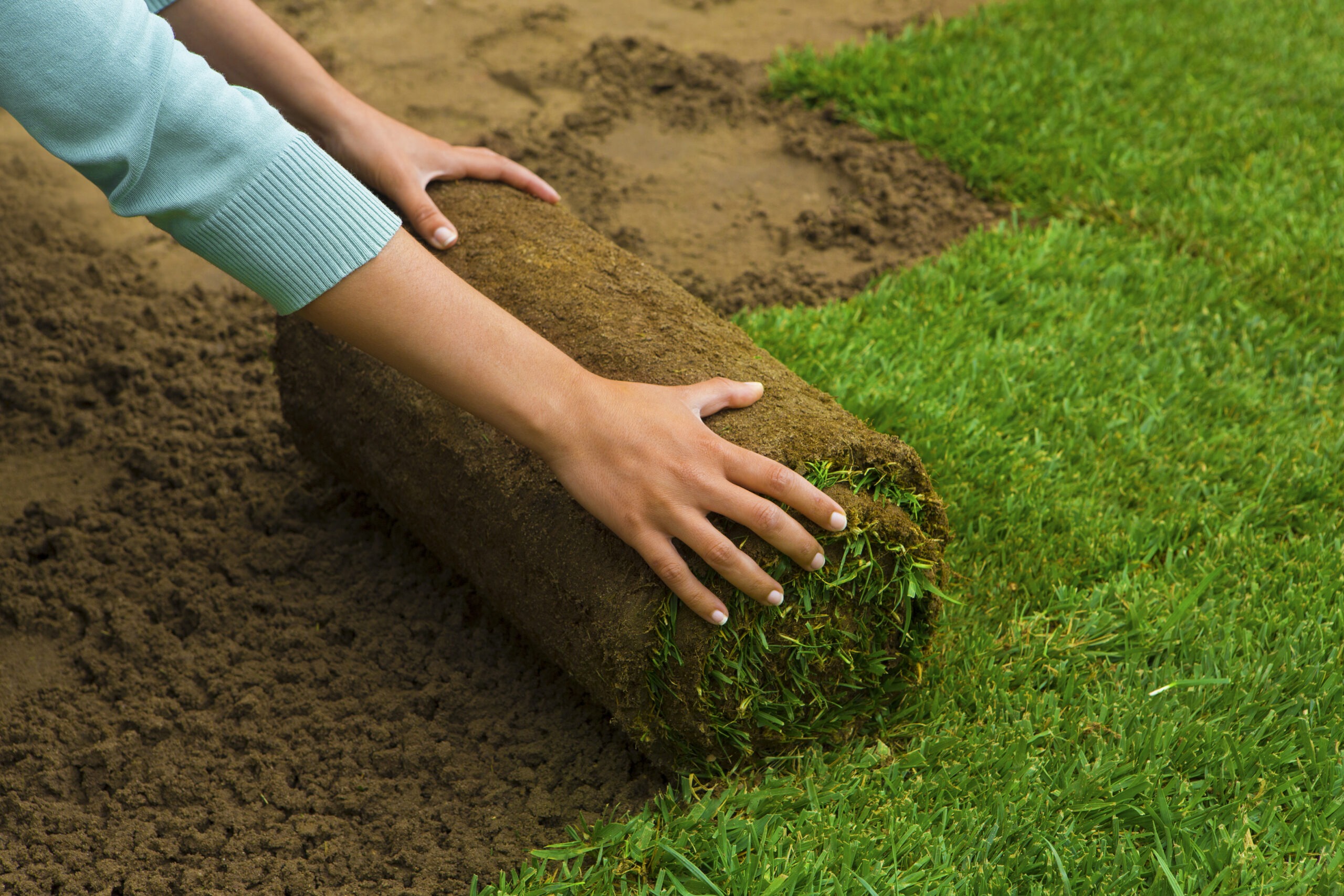Welcome To Amherst Sod Ltd.
Please know that Amherst Sod Ltd. has changed direction in 2020. We are now solely a sod provider. You may know our product as 'Maritime Sod.' It is the same sod, next generation of family business!
 We have worked all winter to restructure the business, which is now a sod provider only. We are in business and working hard in 2020 to build more inventory and improve overall quality in the coming years. We are working to build up our inventory, which will take a few seasons. Our goal is to visit and connect with many past and future contractors, so we can build trust and relationships. We are planning to have lots of top quality sod, with consistent service. This does not happen overnight, but we know some of the changes we have made will be evident this season.
We have worked all winter to restructure the business, which is now a sod provider only. We are in business and working hard in 2020 to build more inventory and improve overall quality in the coming years. We are working to build up our inventory, which will take a few seasons. Our goal is to visit and connect with many past and future contractors, so we can build trust and relationships. We are planning to have lots of top quality sod, with consistent service. This does not happen overnight, but we know some of the changes we have made will be evident this season.
Our Roots
Maritime Sod Ltd was incorporated in 1970 by Robert J. Arseneau due to the unavailability of a good lawn sod for the parent company’s landscaping operation. With a modest beginning of 40 acres in 1966 – hundreds of acres in Amherst, N.S. is now devoted to the production of high-quality bluegrass sod making it one of Atlantic Canada’s largest nursery farming operations.
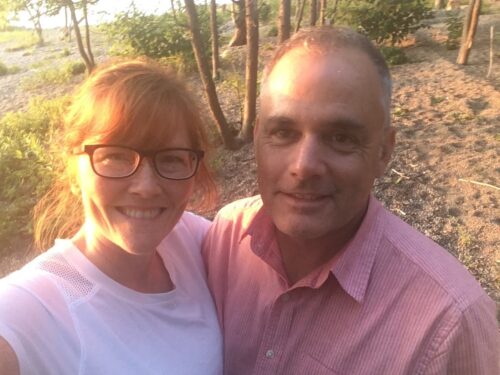

We Start With a Quality Product
Kentucky bluegrass (Poa pratensis) is a favorite and most widely used for good reasons. It grows 18 to 24 inches tall and is readily identified by its boat-shaped leaf tip. It spreads by rhizomes and tillers and forms a dense sod. New shoots (rhizomes and tillers) are produced primarily in the spring and late summer.
Benefits
- very disease resistant
- handles wear and tear very well
- has good cold tolerance making it perfect for our region
- has a lush green color
- good density and chokes out weeds

Helpful Information
Frequently Asked Questions
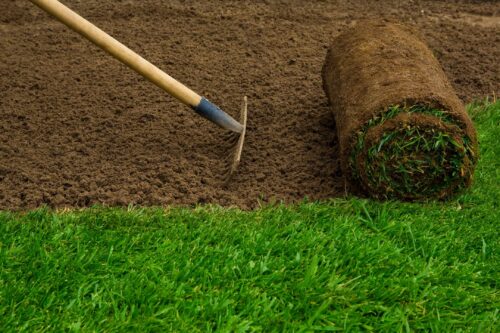
- Saint John: Call 506-634-8540.
- Farm pick-up: Call 902-667-7413.
- Moncton: Call 902-667-7413.
Pallets require a deposit. All pallets must be returned by October 30, in order to receive a refund this year.
For rectangular yards, multiply the length times the width. For example, if your yard is 10 feet by 15 feet, you would multiply 10 by 15 to get 150 square feet.
Sod Chart Square Feet and Square Yards
| Number of Pallets | Square Feet | Square Yards |
|---|---|---|
| 1 | 576 | 64 |
| 2 | 1152 | 128 |
| 3 | 1728 | 192 |
| 4 | 2304 | 256 |
| 5 | 2880 | 320 |
| 6 | 3456 | 384 |
| 7 | 4032 | 448 |
| 8 | 4608 | 512 |
| 9 | 5184 | 576 |
| 10 | 5760 | 640 |
| 11 | 6336 | 704 |
| 12 | 6912 | 768 |
| 13 | 7488 | 832 |
| 14 | 8064 | 896 |
| 15 | 8640 | 960 |
| 16 | 9216 | 1024 |
| 17 | 9792 | 1088 |
| 18 | 10368 | 1152 |
| 19 | 10944 | 1216 |
| 20 | 11520 | 1280 |
| 21 | 12096 | 1344 |
| 22 | 12672 | 1408 |
- Measure all the dimensions or sides of the area.
- Draw the area on graph paper using the measurements you obtained. Make sure your drawing is to scale.
- Divide the drawing into shapes.
- Figure the area of each shape.
- Add the areas of all the individual shapes to find the total square footage.
A single roll of our sod measures 16″ x 81″, or 9 sqft.
There are 64 rolls (576 sqft) on each pallet.
The freight charge is built into the cost, so the prices are based on trucking plus cost of sod and pallets.
Sod is a perishable product after it is harvested and on pallets. It should only be ordered when your yard has been prepped and you will be able to lay it soon after pickup or delivery.
We suggest ordering your sod a week in advance as this allows us to plan a fresh harvest and coordinate delivery to best meet your needs. We strive to pre-order as much as possible to minimize the time between harvest and when the sod is on your ground.
Give us a call, and we would be happy to help!
Our office: Quispamsis, NB
(506-634-8540)
Our farm: Amherst, NS
(902-667-7413
Amherst, NS
We are located at 95 Highway 6, West Amherst, Nova Scotia, and can be reached at (902) 667-7413.
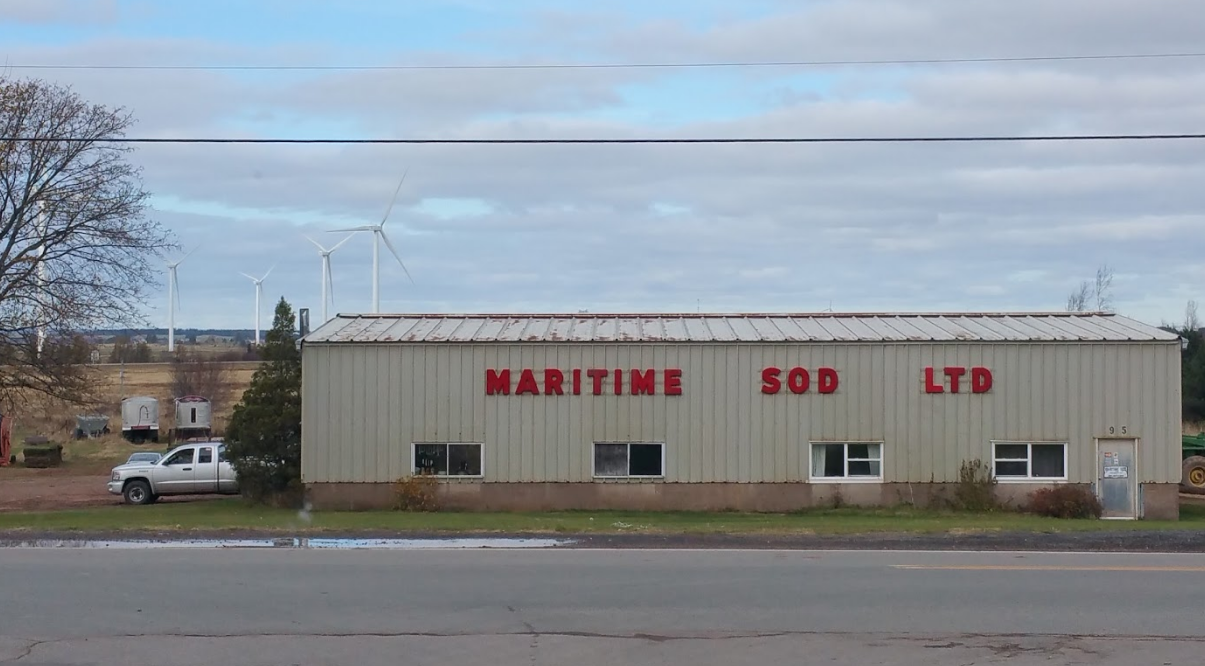
Quispamsis, NB
Our office and sod depot is located at the “Red Roof Service Centre” on 175 Palmer Brook Road. We can be reached at (506) 634-8540. Delivery services provided by our friends at the Red Roof Service Centre.

- Clear the site of all rocks, stones or other debris that is larger than 2-3 inches in diameter.
- Rough grade the entire area to eliminate drainage problems by sloping the grade away from building foundations and filling low-lying areas.
- Till the existing soil to a minimum depth of at least 2 inches before adding any topsoil or soil amendments.
- Add topsoil, if necessary, to achieve a total topsoil depth of 4-6 inches.
- Test the soil pH accordingly. Follow the recommendations regarding lime or gypsum addition to correct pH discrepancies.
- Apply “starter fertilizer” that is high in phosphate (P, or the middle number on a bag of fertilizer), at a rate recommended for the particular product. Typical starter fertilizer recommendations are (N-P-K) of 10-10-10 or 19-19-19. Lightly incorporate this starter fertilizer into the top 2-3 inches of topsoil to avoid root injury.
- Lightly tamp or roll the topsoil to settle the surface and create an ideal surface for installing the sod.
The degree of acidity and alkalinity is measured on a scale of 0-14, with a pH of 7 neutral, 0-7 acidic, and 7-14 alkaline. The ideal soil pH lawn grasses is 6.5, just a little on the acidic side. A soil test is needed to determine the pH of your soil.
Here’s perhaps the easiest of all ways to test soil pH: Head to the nearest home center or nursery, and pick up a testing kit. (Alternatively, buy one from an online retailer like Amazon). When used correctly, such kits are fairly reliable. Not every kit involves the same order of operations, but generally the process begins with digging a small hole, two to four inches deep.
Move any twigs or stones to the side, then fill the hole with distilled water—that is, water that is neither acidic nor alkaline. (If you don’t have any on hand, you can buy a bottle from almost any grocery store or pharmacy.) As the hole you created in the soil turns into a muddy pool, insert the test probe. Now wait.
After about a minute, you should get a reading. If the pH registers as being lower than 7, that means your soil is acidic. Higher than 7? Your soil is alkaline. (Exactly 7 means your soil is neutral.) Bear in mind that most plants do well in soil with a pH between 6.5 and 7. If yours falls within that range, consider yourself lucky. No small number of gardeners must amend their soil to make it hospitable.
No, we do not offer landscaping services.
Our Dedicated Team
Hard Working People

Stanley Lake
Farm Operations Manager
Important Instructions
Sod Care
Install your sod immediately and begin watering.
Do not wait until the next day!
Sod is perishable and must be installed immediately upon receipt and followed by a deep watering. Heat can build up within a roll and cause damage to turf. Most successful sod installations are installed right after delivery to the job site. After rolling, begin irrigation deeply, six inches down into the soil until it’s soggy to walk on.
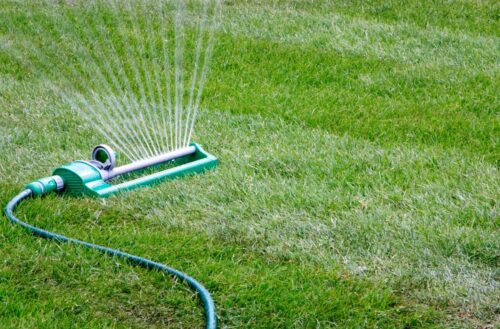

- Proper watering is essential to the establishment (rooting) of your new sod.
- As much as 2 to 6 sprinklings during the day (morning and afternoon) are required until sod begins to root. Adjust for location, sprinklers, and temperature.
- Stay off new sod until after the first mowing.
- Try cutting back the frequency of irrigations just before the first mow to firm up the soil.
- The first mow is approximately 14 days after installation.
- Mowing high is least stressful to the new sod. Never mow off more than one-third of the grass blade.
- Reduce the frequency of watering gradually after each mowing, while increasing minutes per watering.
- Deeper, less frequent soakings will help roots grow down deeper and establish more quickly into the soil.
- Pull or tug on turf to check rooting.
- Fertilize your new sod lawn at one month to continue encouraging rooting and establishment.




